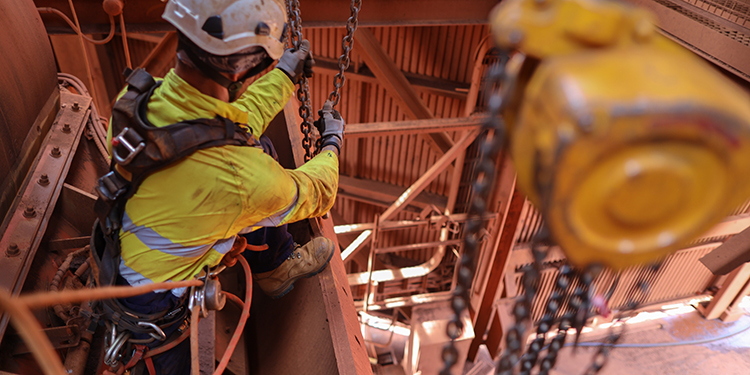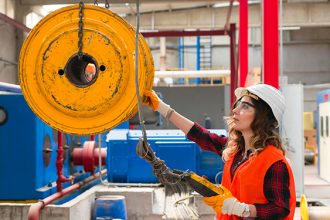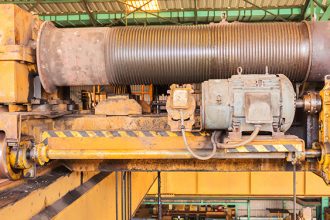Protect Workers Servicing Overhead Cranes From Falls

Inspecting and servicing overhead industrial cranes requires personnel to work at heights, increasing their risk of injury or death should they fall. Likewise, any tool they may accidentally drop becomes a potential hazard to employees working on the ground beneath the overhead handling equipment. For that reason, the Occupational Health and Safety Administration (OSHA) has several requirements for the implementation and usage of fall protection in such situations.
OSHA’s requirements include:
- OSHA 1910.28, which states that employers must provide protection for each employee exposed to fall or falling objects.
- OSHA 1910.29 outlines the criteria and practices that must be followed as companies determine what work employees might perform that necessitates fall protection. Once this is assessed, the company must confirm that each fall protection system provides the necessary protection to the employee and is installed and operational prior to the employee completing that work.
- OSHA 1910.30, which mandates that the employer must provide training for each employee who uses personal fall protection systems, and that the training must be provided before any employee is exposed to a fall hazard.
Fall protection equipment, such as fall arrest systems, serves both as a means to prevent the accidental fall of workers and their tools while working at height, as well as to stop a fall before it causes a catastrophic injury. The most commonly used fall protection systems are devices that include a harness worn by the operator that is attached to a self-retracting lanyard. The lanyard is connected to an overhead anchor point. Also sometimes referred to as a “lifeline,” the fall protection system reacts immediately to stop and suspend an operator or tool should it begin to fall.
When fall protection systems are used in the same areas as overhead cranes, a decision must be made as to where to position the anchor point, or multiple anchor points. Depending on the operation, the type of overhead crane used, and the work that must be performed, different fall protection solutions may be deployed.
OSHA also publishes a standard for fall protection systems criteria and practices. It states:
- OSHA 1926.502(d)(15) Anchorages used for attachment of personal fall arrest equipment shall be independent of any anchorage being used to support or suspend platforms and capable of supporting at least 5,000 pounds (22.2 kN) per employee attached, or shall be designed, installed, and used as follows:
- OSHA 1926.502(d)(15)(i) as part of a complete personal fall arrest system which maintains a safety factor of at least two; and
- OSHA 2926.502(d)(15)(ii) under the supervision of a qualified person.
In addition to OSHA’s requirements, best practices that keep employees safe from personal falls or tool drops when working on overhead cranes include:
- Always use a fall protection system for both personnel and tooling used when working on overhead cranes, even if a mobile scissor lift, aerial work platform, physical platform, or crane walkway is present.
- Ensure that fall protection harnesses and lanyards are regularly inspected and certified.
- Verify that the fall protection equipment has been properly designed for the application.
- Follow crane manufacturer recommendations and guidelines for proper location and installation of fall protection systems and anchorage.
- In addition to the worker at height, assign a second employee on the ground to monitor the work area. This person watches for distractions while the operator overhead focuses on the task at hand. The floor-based employee also warns others approaching the area of the overhead work being performed.
- Block access at floor level beneath the work area to protect pedestrians from possible falling tools, parts, or other items that may not be secured overhead.
- Lock-out/tag-out the overhead crane per OSHA guidelines prior to performing the service work.
Looking for more best practices for the safe operation and use of overhead lifting equipment? The Overhead Lifting Best Practices Guide is offered as a free download from the members of the Overhead Alliance: the Crane Manufacturers Association of America (CMAA), Hoist Manufacturers Institute (HMI) and the Monorail Manufacturers Association (MMA). The document was developed by the group’s Service and Safety Committee in collaboration with OSHA through the Crane, Hoist and Monorail (CHM) Alliance. Through this partnership, the organizations provide information, guidance and access to training resources that help protect the health and safety of worker using hoists, cranes, and monorails.



